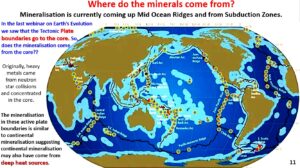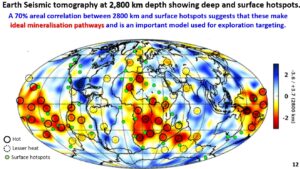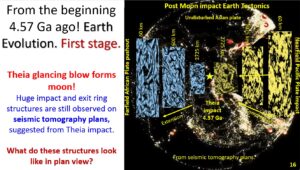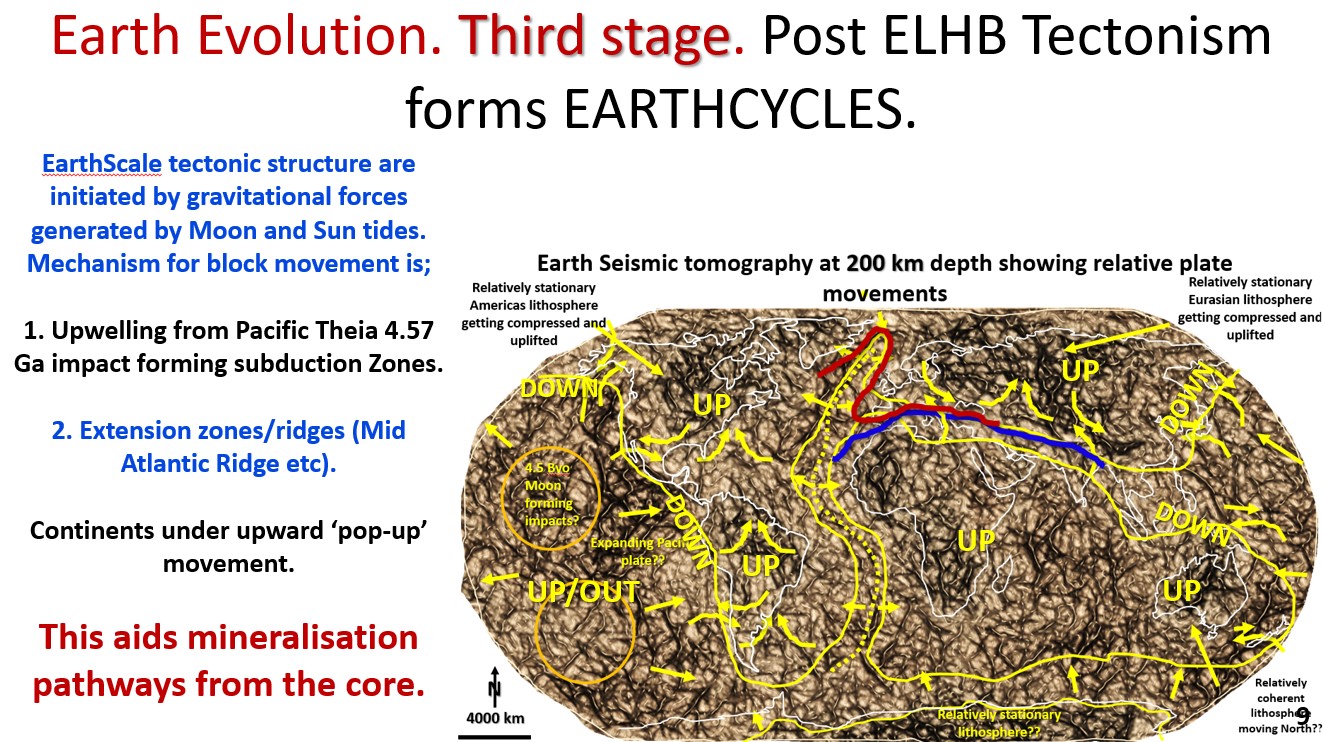Figure 9 above. Earth Evolution. Third stage. Post LHB Tectonism forms EARTHCYCLES.
The webinar on Earth Evolution (https://www.youtube.com/watch?v=snu8En442Js&t=20s ) covered the various stages of how the Earth involved. We will commence at the third stage as the first and second stages (4.57to 3.8 Ga) were prior to any known mineralisation.
The various levels of Earth had been formed, a solid Fe/Ni Inner Core, the viscous Outer Core, the Mantle, Lithosphere and Crust.
I suggest that the impact site of Theia into Earth (the Pacific Ocean is favoured) has remained the main upwelling of heat from the Core. Currently magma is upwelling out of the middle of the Pacific Ocean and is descending around the Ring of Fire and is cut off by the Outer Core which is several thousand degrees centigrade hotter than the mantle (~2,500 C mantle and ~4,500 C Outer Core. This puts the Outer Core under pressure and cracks the more brittle Mantle, Lithosphere and Crust.
The above figure shows this diagrammatically.
The continents are thus under upward, extensional pressure. This extensional global regime is ideal for upward passage of superheated fluids and magma from the Outer Core and is the basis for my Global Mineralising systems and Global Exploration Targeting regime.
Where do the minerals come from?

This figure shows mineralised vents on the ocean floor. They closely follow the plate margins/suture zones and the subduction zones. In my webinar on the Earth’s evolution (topic of poster session 1 at 6ias, https://www.youtube.com/watch?v=snu8En442Js ) I have shown that these plate margins, and rifts are subvertical and extend to the Outer Core.
These mineralised vents give us a strong clue as to where the heavy minerals that we mine come from!?
They certainly do not come from the Crust or Lithosphere. Minerals heavier than iron cannot be formed on Earth. The heavy minerals must have originated in outer space and specifically from neutron star collisions. Temperatures over 10 billion °C are required before these heavy minerals are formed. The Core of Earth is only approximately 6,000°C.
Most of these minerals will have come from the original formation of Earth from cosmic dust. The post Late Heavy Bombardment (LHB) impacts will have only provided a very small percentage of the heavy minerals on Earth.
This suggests that the heavy minerals on Earth have come from the core. My research has shown that large vertical fractures originating from the core exist under all major mineral fields. This is shown by the pattern of minerals coming up Plate Margins and Extensional Ridge zones seen in the above plan. What drives this system?

This seismic tomography plan is 2,800 km deep, just above the outer mantle Outer Core contact. It shows the hot areas (slow seismic waves) above the Outer Core.
These hot areas are larger than the continent of Africa, one occurs in the Pacific and the other under Africa.

As described in the Earth Evolution webinar (figure 16 above), I believe the Pacific hotspot is where Theia impacted Earth forming (observe earthscale ring structures). The hotspot under Africa, is the bulge pushed out from the impact on the diametrically opposite side of Earth from the Pacific impact. These African hotspots may be Farfield structures through which enormous quantities of heat flows.
There is a ~70% correlation between the hotspots at 2,800 km depth and the hotspots on the surface. This strongly suggests that the heat travels vertically, or radially, up from the Outer Core to the surface. This heat transfer drives mantle/lithosphere/crust tectonics and global mineralisation.

